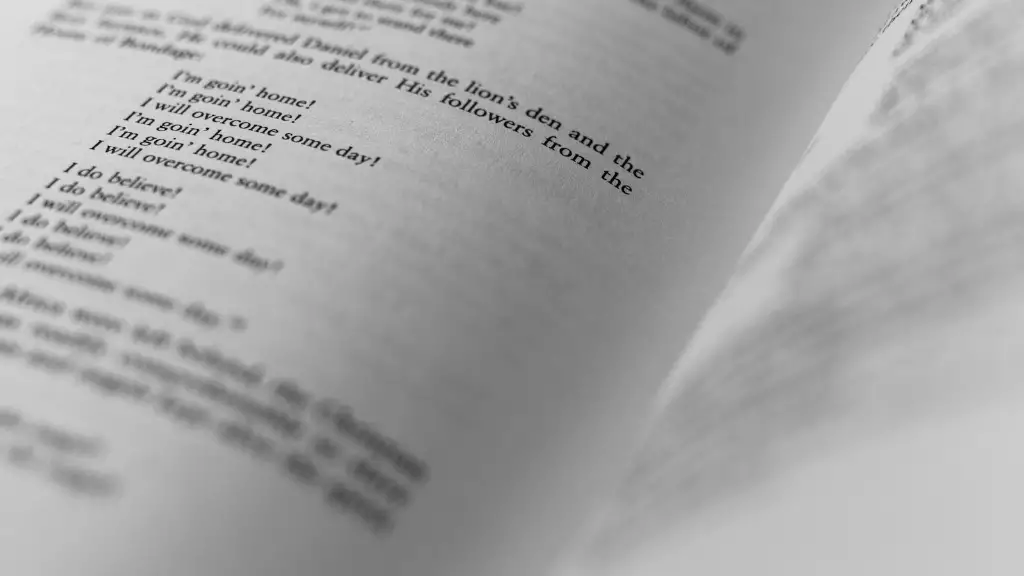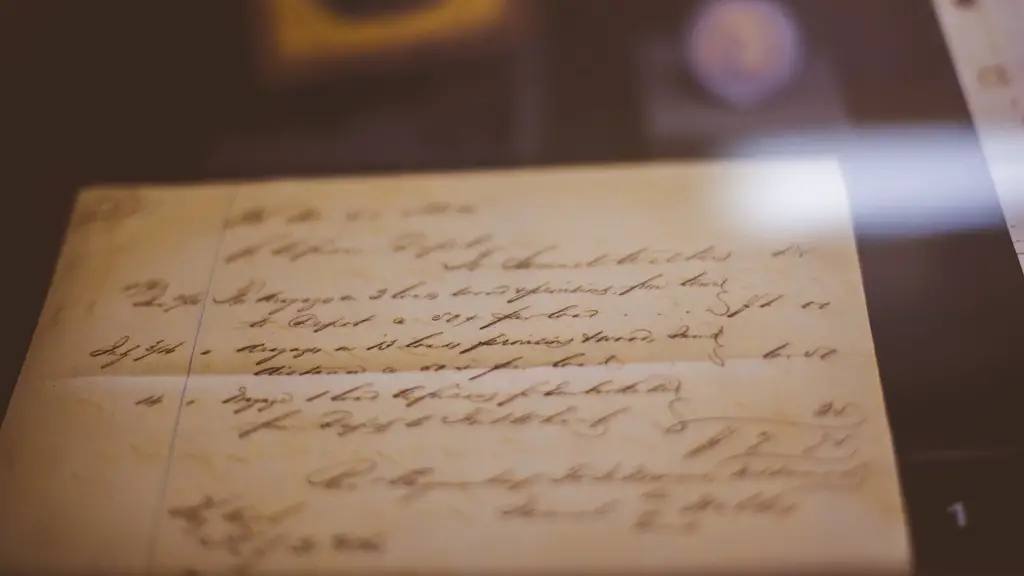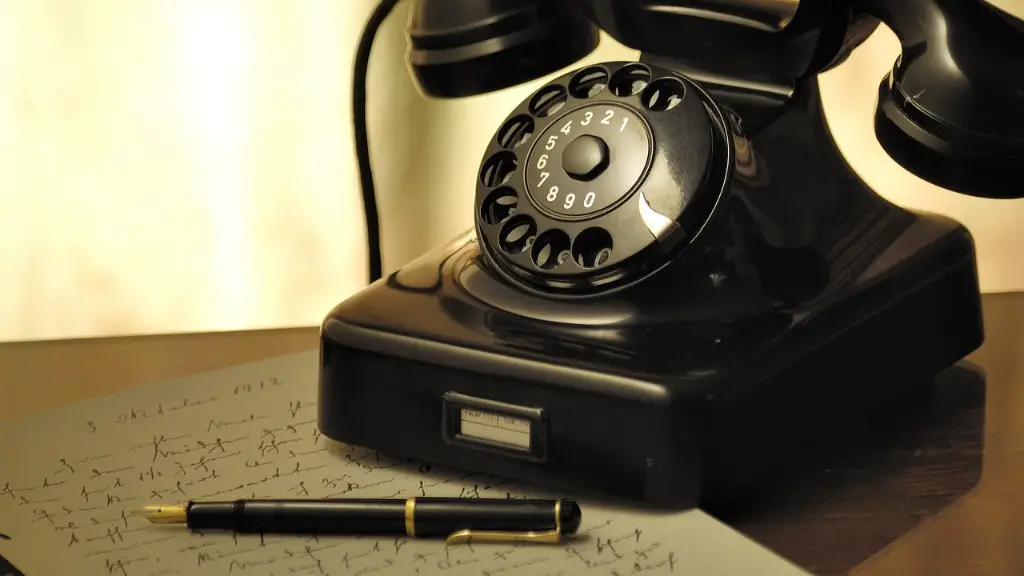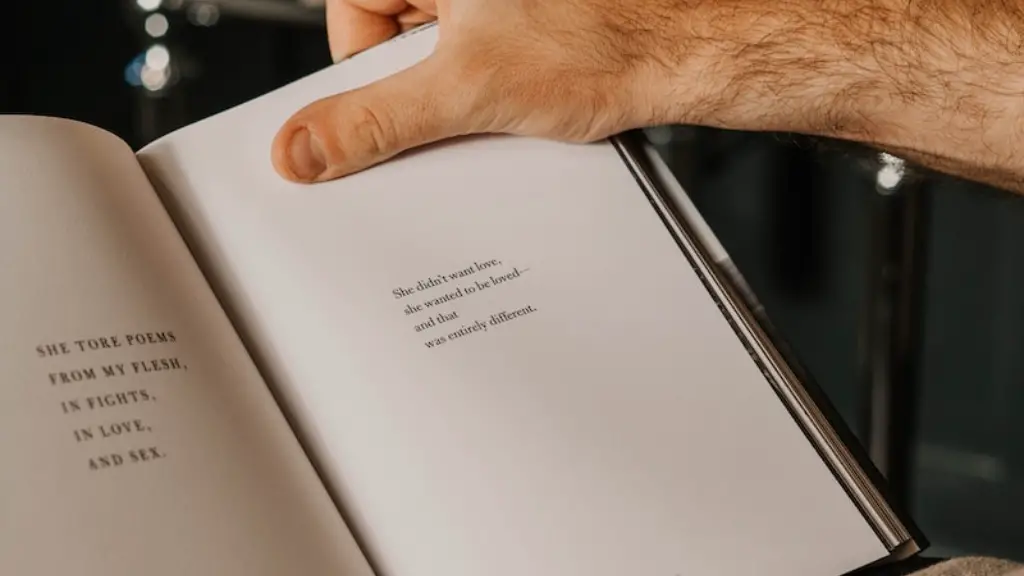What is the Form in Poetry?
The term ‘form’ has various different meanings, depending on its context. It may refer to the physical structure or shape of a thing, like the form of a house or a sculpture. However, when referring to poetry, form indicates the particular pattern and guidelines which a poem follows.
There is no single consensus on what exactly defines ‘form’ in poetry. Generally speaking, elements like metre, line, sound and expressive language make up a poem’s form. However, the way these elements work in concert to give the poem its particular ‘shape’ or ‘structure’ determines its overall form. Understanding the form of a poem can help to determine its central meaning, as well as its intended effect.
Experts define the form of a poem in two basic ways: using traditional technical terms, or using descriptive words related to association and sound. Traditional terms, like ‘sonnet’ or ‘limerick’, usually give an indication of the total number of lines and the metre to be used, whereas descriptive words like ‘quatrain’ and ‘free verse’ tend to indicate a certain ‘feel’ given by the poem.
Using traditional technical terms to describe a poem’s form can be difficult for even the best of poets. This is because a poem can vary from its traditional form in many ways. An example of a traditional poem is the ‘sonnet’, which traditionally consists of fourteen lines, a particular rhyme scheme and an abab cdcd efef gg end-structure. However, its meaning and message can change drastically when given a completely different structure and wording, for example when written in ‘free verse’.
The important thing to remember is that the form of a poem is determined by the poet’s own choices. It is up to the poet to decide which words, sounds and feelings to use, how to structure them and how to combine them. The form of the poem is thus determined by the meaning which the poet wishes to convey.
Rhyme and Sound
Rhyme is one of the most common elements of poetic form, and is often used by poets to accentuate the meaning of their poem and make it come alive. A rhyme also serves to link words together, adding to the structure of a poem and giving it an even greater impact. Different types of rhyme patterns can also be used in a poem in order to further emphasize its message.
Sound is another major part of poetic form. Poets often employ onomatopoeic words, such as ‘buzz’ or ‘hiss’, which imitate the sounds of their subject or of the poem’s main theme. By focusing on the sound of a poem, a poet is able to draw attention to its central message in a powerful way.
Furthermore, sound can also be used to draw the reader in and keep their attention. Repetition and alliteration are two common examples of sound which can be used to great effect in a poem. By repeating certain words and/or syllables, the poet may be able to convey the idea that certain events or ideas are important and require focus. In contrast, alliteration can provide an interesting aesthetic effect, and can also be used to express feelings.
Emotions and Mood
When considering the form of a poem, one must also consider its emotional content. The poem’s emotions and mood help to define its overall shape. Poets often use this as a tool to add a personal touch to their poem, or to express a certain feeling that resonates with their reader.
Of course, it is not enough to merely write a poem with an emotional topic. The words and sounds used in a poem help to highlight and illustrate the feelings of the poem, such as joy or sorrow, happiness or anger. By using words and sounds to emphasise certain feelings, the poem is able to transmit its emotional power to its reader.
In addition, a poet may use their words to create a specific mood or atmosphere within the poem. This is done by the word choices that the poet makes and the particular order which they put the words in. By creating the right mood or atmosphere within a poem, the poet can create a powerful connection between their poem and the reader.
Metre and Line Length
The meter of a poem is also an important part of its form. Meter is the rhythm and regularity of a poem, and gives it a certain structural feel. Metrical poems are usually divided into stanzas of two or four lines, which adds a pattern and order to the poem. Metrical poetry is often associated with formal, classical poetry, which follows strict rules of metre and rhyme.
In terms of line length, this too can play a significant role in the form of a poem. A longer line adds a certain solemnity to a poem, whereas a shorter line gives it a lighthearted, playful feel. The poet can also use varying line lengths to create different emphases and effects within the poem.
Combining these two elements – metre and line length – can help to create a poetic form that is uniquely expressive and meaningful. The resulting poem will have a particular ‘feel’ which can be communicated to the reader.
Visual Shape
The visual shape of a poem is also important to consider. The arrangement of words on the page can often give a poem a unique ‘shape’, either in the form of a circle, a triangle, or a star. This ‘visual shape’ often reflects the mood of the poem and its message.
The most common form of visual shape is the shape of a poem’s stanzas. For example, poetic forms such as the sonnet and the haiku usually have a distinct style of stanza arrangement which conveys their message through its visual appearance. Furthermore, some poets will break the traditional ‘square’ form of a poem and create unique forms, such as a ribbon or a spiral. This allows for an even greater variety of visual shapes, depending on the poet’s particular style.
Using visual shape, a poet can communicate their emotions more fully and directly to the reader. Every visual shape is imbued with a certain feeling or emotion, and by making the right choice of shape, the poet ensures that their poem conveys the desired effect.
Structure and Meaning
The structure of a poem is one of the most important elements of its form. Structural elements, such as the number of lines, stanzas and metres, can help to frame the poem’s message and give it a certain structure and focus. The structure of a poem also determines its overall impact.
In addition, the structure of a poem can be used to create an effect that is contrary to its message. For example, a poem with a sense of despair may have a structure which appears happy and uplifting. By mixing and matching structural elements, the poet can create a unique and powerful effect in their poem.
Lastly, the structure of a poem may also determine its overall meaning. The use of symbols and metaphors, for example, may add another layer of meaning to the poem, or suggest a different interpretation of the poem altogether.
Rhythm and Flow
The rhythm of a poem is another integral component of its form. By paying close attention to the meter and overall sound of a poem, the poet is able to create a pleasing and memorable pattern in their work. The rhythm of a poem will often reflect the mood and structure of the poem, as well as its message.
The poet can use rhythm to great advantage in order to emphasise certain words or emotional elements. Repetition and alliteration are two of the most common forms of rhythm which are used in poetry. Repetition allows the poet to draw attention to certain words or ideas, whereas alliteration adds a unique sound to the poem, creating a memorable effect.
In addition, the flow of a poem may also be important to consider. The flow of a poem helps to determine the overall experience of a reader, as it can make a poem appear more natural and easier to read. By mastering the flow of a poem, the poet can ensure that their message reaches its intended audience.
Expressive Language
Finally, language forms an important part of a poet’s technical style. Poetic language is often imbued with emotion, from simple words like ‘love’ or ‘heartache’, to complex phrases like ‘chimerical dreams’ or ‘iridescent horizons’. By using expressive language, the poet is able to bring the poem to life and capture the attention of their reader.
Choosing the right words for a poem can be tricky, as there are a variety of techniques which can be employed to great effect. From similes and metaphors, to personification and hyperbole, the poet can find a variety of ways to communicate their message and express their feelings.
The use of expressive language can also be used to create a certain atmosphere within the poem. By playing with the language, the poet can draw the reader in and establish a certain mood. This can be used to great advantage when trying to convey a strong message.





